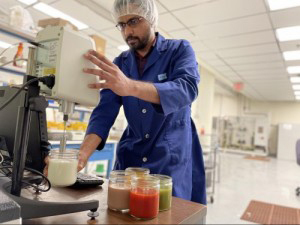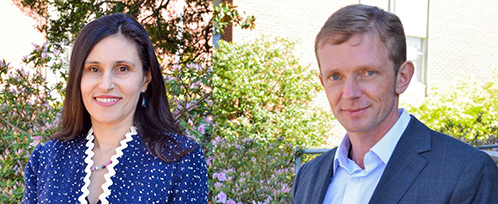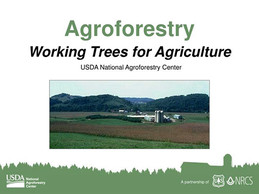|
Having trouble viewing this email? View it as a Web page.

|
|
|
Editor: Kelly Sprute April 7, 2021
Making a Difference
OSU Forms Food Industry Consortium to Advance Commercialization of Ultra-Shear Technology

Researchers at The Ohio State University’s (OSU) College of Food, Agricultural, and Environmental Sciences (CFAES) have created a university-industry consortium to further the development of and provide access to the licensing of a new, innovative manufacturing technology that preserves foods and beverages using wholesome, recognizable ingredients; no artificial preservatives; and reduced heat.
Called ultra-shear technology (UST), this new method of high-pressure-based shear technology will allow beverage companies to manufacture healthier beverages by reducing thermal exposure through the combined application of elevated pressure, shear, and controlled times and temperatures.
“Healthier beverage options that health-conscious consumers want that aren’t preserved using chemical additives and preservatives with names they can’t pronounce,” said OSU Professor V.M. “Bala” Balasubramaniam, who is leading the project. His laboratory—with a multidisciplinary team of microbiologists, chemists, and nutritionists—investigates innovative food manufacturing technologies and then works with industry to implement them.
And it’s not just drinks that might soon be preserved in a much healthier way. UST can also be used by food manufacturers in the healthier processing of sauces, condiments, and other foods. The team’s UST research is funded through a four-year, $891,000 Agriculture and Food Research Initiative-Advanced Food Manufacturing Program grant from the USDA’s National Institute of Food and Agriculture. For more information, read the OSU CFAES article.
CFAES graduate research associate Jerish Joyner Janahar is studying the impact of ultra-shear technology treatment on different beverages. Photo Courtesy of OSU’s CFAES.
|
|
|

The Phase 3 Project CAFÉ teams continue making good progress. They are now over halfway to completing their work on the eight current initiatives:
- Determining a tool for grant portfolio data analysis;
- Enhancing the user experience on NIFA’s public website;
- Developing recommendations for RFA improvements;
- Expanding workshops and webinars; Improving payment time to panelists;
- Developing a program implementation schedule from RFA to award and
- Developing NIFA training materials; and Streamlining panel manager hiring processes.
In mid-March, we launched a new Program tab on NIFA’s website. This page now organizes NIFA funding programs by Competitive, Non-Competitive, Capacity, and Loan Repayment Programs along with focused Operational Areas. We hope this update makes it easier for you to find the programs you are considering applying to or are currently participating in.
Please continue to keep an eye out for further improvements to the NIFA website, as we are continuously improving our site navigation and adding content updates.
In other CAFÉ efforts, the team evaluating and identifying improvements to our Request for Application documents (RFAs) has just completed a series of information-gathering interviews with several of our external stakeholders and other grant-making federal agencies. Thank you to all who participated in this process for your time and transparency. The RFA team is now focused on incorporating the insights and new ideas they gathered into recommendations we can enact.
We expect to have exciting new developments to report to you next month as the Phase 3 CAFÉ initiatives begin to draw to a close. Please continue to check progress on all initiatives in the Project CAFÉ Dashboard.
Dr. Carrie Castille
Director, National Institute of Food and Agriculture
|

NIFA Invests $15.5M in Food and Agriculture Cyberinformatics Tools to Boost Agricultural Production
NIFA invested a total of $15.5 million in two key programs awarded through its Agriculture and Food Research Initiative Food and Agriculture Cyberinformatics and Tools. NIFA awarded 18 Food and Agriculture Cyberinformatics Tools grants totaling $10.4 million to initiate research on big data analytics, machine learning, artificial intelligence, and predictive technologies needed to keep U.S. agriculture on the leading edge of food and agricultural production. NIFA also invested $5.1 million for 12 Nanotechnology for Agricultural and Food Systems grants to support nanotechnology-based solutions that improve food production, nutrition, sustainable agriculture, and food safety.
“Big data and artificial intelligence will increasingly play a vital role in the future of agricultural technologies and innovation,” said NIFA Director Carrie Castille. “As we work to enhance farmer profitability and agricultural sustainability and realize precision nutrition for consumers, these technologies will keep research and development moving at a rapid pace to provide the tools needed for success.” For more information, read the NIFA press release.
Image courtesy of Adobe Stock.
|

Covid-19 Public Education Campaign
The U.S. Department of Health and Human Services launched a national public education campaign on April 1, 2021 to increase public confidence in COVID-19 vaccines, while reinforcing basic prevention measures such as mask wearing and social distancing. To achieve these goals, toolkits were developed with tailored information and materials to help share the campaign messages throughout the Country. The USDA is committed to working alongside our federal partners to contain the pandemic and get the economy back on track, and we believe sharing these toolkits with a network of trusted messengers will produce consistent, fact-based public health messaging, and help the public make informed decisions about their health, and steps they can take to protect themselves and their communities. The toolkit and other material resources can be found at WeCanDoThis.HHS.gov.
|

First-Year and Transfer Students Can Dig into Research this Summer with Paid USDA Internships
Many students don’t think about internships until later in college, but at the University of California, Merced undergraduate students can take advantage of hands-on training with faculty before even starting regular classes. Through the FACTS Bridge Program, first-year and transfer students get a head start on research and much more. The FACTS Bridge Program is a new internship designed to immerse students in agricultural science and research. It stands for San Joaquin Valley Food and Agriculture Cyberinformatics Tools and Science (FACTS). The six-week summer course, funded by the United States Department of Agriculture and National Institute of Food and Agriculture, introduces students to the world of research in agricultural science and technology. For more information, read the University of California, Merced article.
|

Researchers Look to Help New Farmers Make Better Business Decisions
Auburn University researchers look to create an analytical framework to evaluate the efficiency and productivity of successful beginning farmers. A three-year study by Auburn University’s Valentina Hartarska, Alumni Professor in the Department of Agricultural Economics and Rural Sociology, and a team of ag economists from Auburn and North Carolina State University seeks to help new producers in the Southeast. Supported by a $500,000 award from the USDA’s National Institute of Food and Agriculture. This project would help farmers make better business decisions based on such factors as market volatility and shocks, climate change, and other variables. For more information, read the Auburn University article.
Auburn University's Alumni Professor, Valentina Hartarska, and Professor Denis Nadolnyak. Image courtesy of Auburn University.
|

Climate Change has Cost 7-Years of Ag Productivity Growth
Despite important agricultural advancements to feed the world in the last 60 years, a Cornell-led study shows that global farming productivity is 21 percent lower than it could have been without climate change. This is the equivalent of losing about seven years of farm productivity increases since the 1960s. A new study provides these insights: “Anthropogenic Climate Change Has Slowed Global Agricultural Productivity Growth,” published April 1 in Nature Climate Change, was led by economist Ariel Ortiz-Bobea, associate professor in the Charles H. Dyson School of Applied Economics and Management. Funding was provided by USDA’s National Institute of Food and Agriculture and the National Science Foundation. For more information, watch the Cornell Chronicle video.
Ariel Ortiz-Bobea. Image courtesy of Cornell University.
|

Agroforestry Outreach
Request for Proposals 2021
The USDA National Agroforestry Center is requesting proposals to create regionally-applicable and practice-specific agroforestry educational materials based on producer production information, experiences and testimonies. Awards are anticipated to be up to $100,000, with a minimum of $35,000 for any one project. The agreements awarded under this announcement will support the USDA goal to strengthen the stewardship of private lands through technology and research. These materials will also address natural resource professionals’ need for more information that supports producer adoption of agroforestry. Proposals must be submitted by May 28, 2021. Complete details on this request for proposals can be found online.
|

Climate Change Education: A Cross-cutting Issue in Natural Resource Extension Programing
The Renewable Resources Extension Act provides a framework and funding for Extension Programing that promotes healthy and productive forest and rangeland ecosystems. Yet, a rapidly changing global climate has created uncertainty about the future of our natural resources and sowed disagreements over the science of climate change. The sustainability of our forests and rangeland ecosystems depends on the ability of managers to adopt climate resilient practices. How can Extension professionals best engage stakeholder groups that hold a wide spectrum of views and successfully incorporate climate resilient practices into their programing? Join in for this webinar April 29, at 1 p.m. (ET). Go online for more information or to register.
Webinar graphic courtesy of Adobe Stock.
|

|
|
|
NIFA’s mission is to invest in and advance agricultural research, education, and extension that solve societal challenges. NIFA’s investments in transformative science directly support the long-term prosperity and global preeminence of U.S. agriculture. Keep informed about NIFA, USDA, our land-grant and non-land-grant university partners, and stakeholders with the NIFA Update. Read past issues online, sign up for email updates or follow us on Twitter @USDA_NIFA, #NIFAImpacts or LinkedIn @usda-nifa.
If you wish to submit a news item or information, send an email to NIFAUpdate.
USDA is an equal opportunity lender, provider, and employer.
|
|
|
|